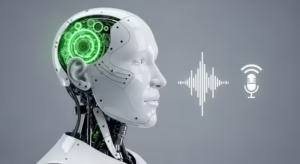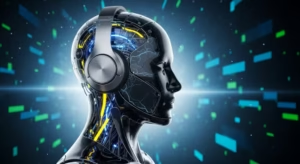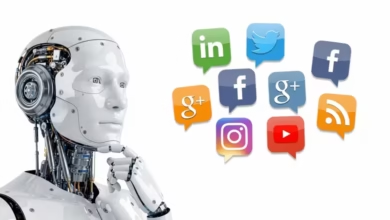AI Voice Generators: Create Any Voice in Any Language

AI voice generators are revolutionizing the way we create and utilize voice content across different languages. This blog post delves into understanding these innovative tools and explores how text-to-speech technology underlies their functionality. Highlighting ElevenLabs, it examines how this platform contributes to advancements in language dubbing AI, making it easier than ever to produce natural-sounding voiceovers. The article also outlines next steps for leveraging AI voice generators in various projects, offering insights for creators looking to enhance their audio content. By integrating AI voice generators, users can achieve remarkable results in voice synthesis and communication in multiple languages.
Understanding AI Voice Generators: A Revolutionary Tool

AI voice generators are transforming the way we interact with technology, allowing users to create realistic speech in various languages and accents. These innovative tools use advanced algorithms and machine learning techniques to produce lifelike audio, making them invaluable for applications ranging from content creation to language dubbing AI. As these technologies evolve, they open up new avenues for businesses and individuals alike, enhancing communication and bridging language gaps with ease.
Key Benefits of AI Voice Generators
- Versatility: Create voices for diverse applications, including podcasts, videos, and virtual assistants.
- Speed: Generate audio content quickly, saving valuable time in production processes.
- Cost-effective: Reduce the need for expensive voice talent or studio setups.
- Customization: Tailor voice characteristics to match specific branding or emotional tones.
- Accessibility: Provide content in multiple languages, supporting wider audience reach and inclusivity.
- Consistency: Maintain uniformity in voice delivery across projects, ensuring brand voice coherence.
- Scalability: Easily scale audio production to meet varying project demands without compromising quality.
This combination of features ensures that AI voice generators are not only groundbreaking but also practical tools for wide-ranging needs. By leveraging language dubbing AI, users can immerse audiences in multilingual experiences, enhancing the overall impact of their projects. The ongoing advancements in this technology promise even greater capabilities in the future, making it a vital asset in today’s digital landscape.
How Text To Speech Technology Powers AI Voice Generators

Text to speech (TTS) technology is revolutionizing how we interact with digital content, enabling the creation of realistic AI voices that can communicate in various languages. This incredible capability allows AI voice generators to convert written text into spoken words, mimicking human intonation and inflection. With applications from education to entertainment, TTS is not just a convenience; it represents a significant leap forward in natural language processing and artificial intelligence.
By leveraging machine learning algorithms and vast databases of recorded speech, modern AI voice generators can produce voices that are nearly indistinguishable from real humans. These voices can convey emotion, personality, and even geographical nuances, making them suitable for diverse applications including audiobooks, virtual assistants, and dubbing for films. The integration of TTS with AI technologies not only enhances user engagement but also addresses accessibility issues by providing auditory content for those with visual impairments.
| Feature | Benefits | Use Cases |
|---|---|---|
| Multilingual Support | Reaches wider audiences | Global marketing, education |
| Emotion Recognition | Enhances relatability | Customer support, virtual companions |
| Custom Voice Creation | Branding opportunities | Podcasts, advertisements |
| Real-Time Processing | Instant feedback | Live translations, interactive apps |
However, the current implementations of TTS and AI voice generators are not without limitations. Factors such as the presence of regional accents, contextual understanding, and the ability to convey nuances in tone remain challenging for developers. As TTS technology continues to evolve, researchers must address these shortcomings to improve the overall user experience and effectiveness of AI voices.
Advantages of Text To Speech
The advantages of text to speech technology are numerous. First and foremost, it enhances accessibility, allowing content to be consumed by individuals who may have difficulties reading. Additionally, it saves time by enabling users to multitask, such as listening to articles while driving or exercising. The capacity to create customized, engaging realistic AI voices further empowers creators to enhance learning and entertainment experiences.
Steps to Create Realistic AI Voices
- Define the target audience and purpose of the voice.
- Collect diverse voice samples for training the AI.
- Utilize advanced algorithms to analyze and replicate speech patterns.
- Incorporate emotion recognition capabilities into the model.
- Test and iterate to refine the generated voice quality.
- Implement user feedback for ongoing improvements.
As AI voice generators continue to integrate TTS technology, the potential to transform communication strategies expands exponentially. By understanding the strengths and weaknesses of current technologies, we can better harness these tools for creative and practical applications in various fields.
Exploring ElevenLabs and Its Role in Language Dubbing AI

ElevenLabs has positioned itself as a frontrunner in the realm of AI voice generators, particularly focusing on language dubbing AI. By leveraging advanced algorithms, ElevenLabs enables seamless translation and voice synthesis, making it a powerful tool for creators in entertainment and education. This technology facilitates the conversion of original audio into other languages with remarkable accuracy, allowing for a natural listening experience that transcends linguistic barriers.
As the demand for multilingual content increases globally, the role of ElevenLabs becomes even more crucial. Content producers can now maintain the original emotional tone and inflection of voiceovers while dubbing in different languages. This is particularly important in industries such as film, video games, and online education, where authenticity and engagement are paramount. The efficiency and cost-effectiveness offered by AI voice generators are reshaping traditional dubbing methods.
| Feature | Description | Benefit |
|---|---|---|
| Multi-Language Support | Offers numerous languages for dubbing. | Wider audience reach. |
| Voice Customization | Allows users to modify pitch, tone, and speed. | Ability to match character personalities. |
| Real-Time Processing | Instant dubbing without lag. | Enhances workflow efficiency. |
| High-Quality Output | Produces clear and realistic voiceovers. | Improves user experience. |
Key Features of ElevenLabs
- Natural-sounding voice generation
- Multi-lingual accessibility
- Customization options for unique character voices
- Advanced neural network technology for improved accuracy
- Fast processing times for efficient production
- User-friendly interface for easy navigation
In practice, ElevenLabs has enabled content creators to explore innovative ways to engage viewers. By combining machine learning with voice synthesis, they are revolutionizing how stories can be told across different cultures and languages. Content creators are no longer limited by geographical boundaries when it comes to sharing their messages, thanks to robust language dubbing AI solutions.
Case Studies on Effective Dubbing
Several notable instances illustrate the effective application of ElevenLabs’ technology in language dubbing AI. For example, a popular streaming service recently utilized this technology to localize its original content for international audiences. This approach not only resulted in increased viewer engagement but also received praise for maintaining the original tone of the voices in the dubbed versions. Such case studies highlight the potential of AI voice generators to not only enhance the quality of content but also broaden the reach of creators in an increasingly globalized market.
Next Steps: Harnessing AI Voice Generators for Your Projects

As you consider the implementation of AI voice generators in your projects, it’s essential to approach the process systematically. These advanced tools have the potential to transform how you engage your audience, providing a new dimension to content delivery via text to speech capabilities. By leveraging these technologies, you can enhance user experience and accessibility while ensuring your content connects effectively with diverse audiences worldwide.
Actionable Steps to Implement AI Voice Solutions
- Identify the objectives of integrating AI voice solutions in your projects.
- Research various AI voice generators and their unique features, focusing on *quality, languages supported, and ease of use.*
- Select a generator that aligns best with your needs and budget constraints.
- Test the selected tool to evaluate its text to speech quality across different languages and scenarios.
- Gather feedback from end-users about their experience with the generated voices.
- Make any necessary adjustments based on user feedback to improve engagement.
- Implement the voice generator across your platforms for consistent messaging and outreach.
Once you’ve outlined the steps, you can begin to experience the numerous advantages AI voice generators offer. Not only can they streamline your production process, but they can also aid in creating a more personalized and engaging experience for your audience. Utilizing these tools not only saves time and resources but also enhances your project’s inclusivity by reaching a broader audience. By taking deliberate actions, you can effectively harness the power of AI voice technology for a wide range of applications, from marketing to education.
Briefing Document: AI Voice Generators: The Future of Voice Content and Communication
Summary
AI voice generators, powered by advanced Text-to-Speech (TTS) technology and machine learning, are rapidly transforming how we create and utilize audio content across diverse languages. These innovative tools offer significant benefits in versatility, speed, cost-effectiveness, and accessibility, enabling the creation of “realistic AI voices” for various applications from podcasts and virtual assistants to global marketing and language dubbing. ElevenLabs is highlighted as a leading platform, particularly in “language dubbing AI,” known for its “remarkable accuracy” in preserving emotional tone and inflection during multilingual translations. While current implementations face challenges in conveying nuanced human expression, the continuous evolution of this technology promises to bridge language gaps, enhance user engagement, and streamline content production processes, making it a vital asset in today’s digital landscape.
Key Themes and Ideas
1. The Revolutionary Impact of AI Voice Generators
AI voice generators are fundamentally changing human-technology interaction by enabling the creation of “realistic speech in various languages and accents.” These tools leverage “advanced algorithms and machine learning techniques to produce lifelike audio,” making them invaluable for a wide range of applications.
- Versatility: They can “create voices for diverse applications, including podcasts, videos, and virtual assistants.”
- Efficiency: They “generate audio content quickly, saving valuable time in production processes” and “reduce the need for expensive voice talent or studio setups.”
- Customization & Consistency: Users can “tailor voice characteristics to match specific branding or emotional tones” and “maintain uniformity in voice delivery across projects.”
- Accessibility & Scalability: They “provide content in multiple languages, supporting wider audience reach and inclusivity,” and “easily scale audio production to meet varying project demands without compromising quality.”
- The article asserts that these tools are “not only groundbreaking but also practical tools for wide-ranging needs,” and their ongoing advancements “promise even greater capabilities in the future.”
2. Text-to-Speech (TTS) Technology as the Foundation
The core functionality of AI voice generators lies in “Text to speech (TTS) technology,” which “is revolutionizing how we interact with digital content.” TTS converts “written text into spoken words, mimicking human intonation and inflection.”
- Realism: Modern AI voice generators utilize “machine learning algorithms and vast databases of recorded speech” to “produce voices that are nearly indistinguishable from real humans,” capable of conveying “emotion, personality, and even geographical nuances.”
- Applications: Beyond basic conversion, TTS empowers applications like “audiobooks, virtual assistants, and dubbing for films.”
- Accessibility: A significant advantage of TTS is its ability to “enhance accessibility, allowing content to be consumed by individuals who may have difficulties reading,” and “providing auditory content for those with visual impairments.”
- Challenges: Despite advancements, limitations exist in addressing “regional accents, contextual understanding, and the ability to convey nuances in tone.” Researchers are focused on addressing these shortcomings to improve user experience.
- Creation Process: Steps to create realistic AI voices include defining the target audience, collecting diverse voice samples, utilizing advanced algorithms, incorporating emotion recognition, and continuous testing and iteration based on user feedback.
3. ElevenLabs: A Leader in Language Dubbing AI
ElevenLabs is identified as a “frontrunner” in AI voice generation, particularly excelling in “language dubbing AI.” Their technology enables “seamless translation and voice synthesis,” producing voiceovers with “remarkable accuracy.”
- Multilingual Content: ElevenLabs helps content producers “maintain the original emotional tone and inflection of voiceovers while dubbing in different languages,” crucial for industries like “film, video games, and online education.”
- Key Features:“Natural-sounding voice generation”
- “Multi-lingual accessibility” with “numerous languages for dubbing,” leading to “wider audience reach.”
- “Customization options for unique character voices” (pitch, tone, speed).
- “Advanced neural network technology for improved accuracy.”
- “Fast processing times for efficient production” with “real-time processing.”
- “User-friendly interface.”
- Impact: ElevenLabs is “revolutionizing how stories can be told across different cultures and languages,” allowing creators to overcome “geographical boundaries” and localize content for international audiences, as demonstrated by “a popular streaming service” case study.
4. Strategic Implementation for Projects
To effectively harness AI voice generators, a systematic approach is recommended, focusing on integrating these tools to enhance “user experience and accessibility” and connect “effectively with diverse audiences worldwide.”
- Actionable Steps:“Identify the objectives” for using AI voice solutions.
- “Research various AI voice generators” based on “quality, languages supported, and ease of use.”
- “Select a generator that aligns best with your needs and budget.”
- “Test the selected tool” across different languages and scenarios.
- “Gather feedback from end-users.”
- “Make any necessary adjustments” based on feedback.
- “Implement the voice generator across your platforms for consistent messaging and outreach.”
- Benefits of Implementation: These tools “streamline your production process,” create “a more personalized and engaging experience for your audience,” and enhance “project’s inclusivity by reaching a broader audience.”
AI voice generators, built upon sophisticated Text-to-Speech technology and exemplified by platforms like ElevenLabs, represent a significant leap forward in digital communication. They offer unparalleled versatility, efficiency, and accessibility, democratizing content creation and enabling seamless multilingual experiences. While challenges in capturing the full spectrum of human nuance persist, the continuous evolution of this technology promises even greater capabilities, cementing its role as a transformative tool for various industries and a crucial asset for reaching a global audience.
For similar articles, please visit: AI in Art, Creativity & Media
Homepage / humanaifuture.com
🎧 Listen to the Podcast
Want to explore this topic in more depth? Listen to the full podcast for more insights and expert commentary.
▶️ Play on Google DriveNo sign-up needed — just click and listen.
How does Text-to-Speech (TTS) technology power AI voice generators?
Text-to-Speech (TTS) technology is the foundational component of AI voice generators. It converts written text into spoken words by mimicking human intonation, inflection, and emotion. Modern AI voice generators leverage machine learning algorithms and vast databases of recorded speech to produce voices that are nearly indistinguishable from real humans. This enables the creation of engaging and accessible audio content for various uses, including audiobooks, virtual assistants, and film dubbing.
What are the key benefits of using AI voice generators?
The key benefits of AI voice generators include: versatility across various applications; speed in generating audio content, saving production time; cost-effectiveness by reducing the need for expensive voice talent; customization of voice characteristics to match specific tones or branding; accessibility through multilingual support, reaching wider audiences; consistency in voice delivery across projects; and scalability to meet varying production demands without compromising quality.
What role does ElevenLabs play in the advancement of language dubbing AI?
ElevenLabs is a leading platform in AI voice generation, particularly excelling in language dubbing AI. It uses advanced algorithms to provide seamless translation and voice synthesis, enabling content creators to dub original audio into multiple languages with remarkable accuracy while maintaining the original emotional tone and inflection. This is crucial for industries like film, video games, and online education, as it facilitates wider audience reach and enhances user engagement globally.
What are some common applications of AI voice generators and TTS technology?
AI voice generators and TTS technology have a wide range of applications, including:
- Content Creation: Producing audio for podcasts, videos, and audiobooks.
- Virtual Assistants: Powering natural language interaction for devices and software.
- Language Dubbing: Localizing films, TV shows, and educational content for international audiences.
- Accessibility: Providing auditory content for individuals with visual impairments.
- Marketing and Advertising: Creating custom voiceovers for advertisements and brand messaging.
- Customer Support: Enhancing interactive voice response (IVR) systems.
What challenges still exist for AI voice generators and TTS technology?
Despite their advancements, AI voice generators and TTS technology still face limitations. These include challenges in accurately conveying regional accents, achieving perfect contextual understanding, and consistently delivering nuanced emotional tones. Developers are continuously working to address these shortcomings to improve the overall user experience and the effectiveness of AI-generated voices.
How can one create realistic AI voices using current technology?
To create realistic AI voices, the general steps involve:
- Defining the purpose and target audience for the voice.
- Collecting diverse voice samples for training the AI model.
- Utilizing advanced algorithms to analyze and replicate complex speech patterns.
- Incorporating emotion recognition capabilities into the model.
- Extensive testing and iteration to refine the quality of the generated voice.
- Implementing user feedback for continuous improvement and naturalness.
What are the recommended steps for integrating AI voice solutions into a project?
To effectively integrate AI voice solutions into a project, it's recommended to:
- Identify clear objectives for using AI voices in the project.
- Research various AI voice generators, focusing on factors like quality, supported languages, and ease of use.
- Select the generator that best aligns with project needs and budget.
- Thoroughly test the chosen tool for text-to-speech quality across different languages and scenarios.
- Gather feedback from end-users regarding their experience with the generated voices.
- Make necessary adjustments based on user feedback to enhance engagement.
- Implement the voice generator consistently across all relevant platforms for unified messaging and outreach.




